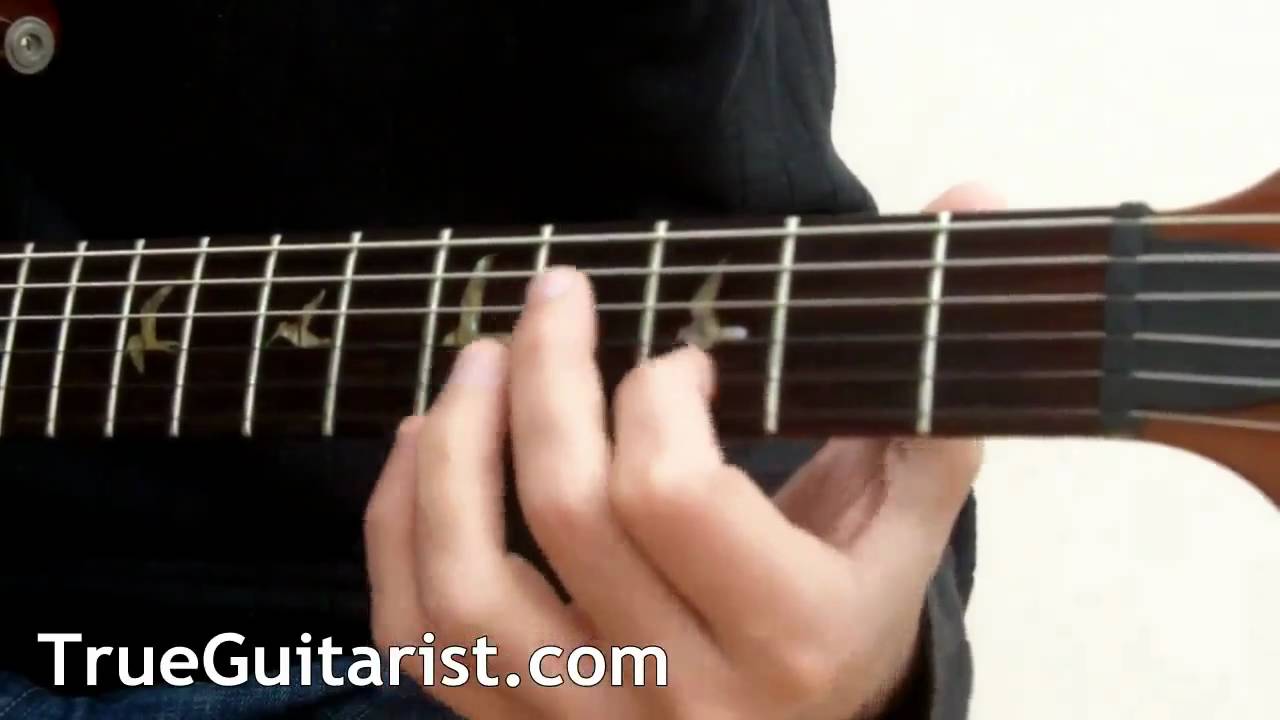In this video I show the most common 7th chord shapes, it’s all pretty self explanatory! for the theory you can also checkout these other lessons: https://www.trueguitarist.com/understanding-how-triads-and-other-chords-are-built https://www.trueguitarist.com/from-the-major-scale-to-the-harmonized-scale-pt-2-7th-chords And the shapes I use are here: https://www.trueguitarist.com/LESSON%20MATERIAL/7th%20chords.jpg
Category: From the major scale to (hopefully) understanding how things work.
Harmonized major scale with 7th chords on guitar
We have seen in previous lessons how to build the harmonized scale from the major scale. In this video I show the application on guitar in three different keys, using 7th chords. This is what I play in the video: You can find the most used 7th chords here as well: Most common 7th chord shapes on… Continue reading Harmonized major scale with 7th chords on guitar
Intervals Explained pt 2: practical application on guitar.
We have seen in this post https://www.trueguitarist.com/intervals-explained/ what intervals are in theory and how the simplest and safest way to identify an interval is by calculating the number of semitones between the two notes. Again, this is the table for you to ‘do the math’: N.of halfsteps 1 2 3 4 5 6 6 also 7… Continue reading Intervals Explained pt 2: practical application on guitar.
Triads Pt 2 Spread Voicings
We have seen in the previous lesson al the major triads in close (or closed) position. As already stated if these notes of the triad (or ‘voices’) are contained within an octave we call it in ‘close’ or ‘closed’ position, as opposite as ‘spread’ position (more than an octave). Just watch the video where I… Continue reading Triads Pt 2 Spread Voicings
Triads
In this lesson I go through all inversions for the most popular major triad ‘shapes’ on guitar. The theory behind triads is quite simple: a major triad is basically the 1st, 3rd and 5th note of a major scale. If analysed in intervals: from the root I will have a first note that is a… Continue reading Triads
Basic Music Theory for Beginners Pt 2:on Guitar, Practical Application.
Basic theory knowledge pt 2: on Guitar! Let’s now go back to the basic theory post (quite successful over 10k views just the day I posted!) , and let’s see how things apply to guitar…just read the explanatins in red and watch the videos! Let’s start again: The natural sounds are: English C D E F… Continue reading Basic Music Theory for Beginners Pt 2:on Guitar, Practical Application.
Basic Music Theory for Beginners
Basic theory knowledge What follows is just a brief summary of basic theory and harmony necessary to understand practical applications on your instrument. The natural sounds are: English C D E F G A B You might also find in some books the name of these notes in Italian (nothing to do with ‘solfege’!) Do,Re,Mi,Fa,Sol,La,Si… Continue reading Basic Music Theory for Beginners
Chord scale exercise
Printable PDF: Chord-Scale Ex. This is an introduction to how to use the right scale for the chord of the moment. I will not be talking about modes yet as I find this creates a bit of confusion at this stage. We have seen how on every degree (=note) of the scale we can build… Continue reading Chord scale exercise
Simple song analyzed
In this video I show some examples of very simple chord progressions that originate from the Harmonized Major Scale. When I say ‘one, four, five’ I mean the song is built by the 1st, the 4th and 5th chord of the harmonized scale. So such song would be C major, F major, and G major… Continue reading Simple song analyzed
From the major scale to the harmonized scale (Pt.2 7th chords)
How to add the 7th to triads from the major harmonized scale? We have already seen how to find the triads that belong to the major harmonized scale. ..adding the 7th is very simple. If we stack another note a diatonic third apart from the last note we have found, we will have Seventh chords.… Continue reading From the major scale to the harmonized scale (Pt.2 7th chords)






